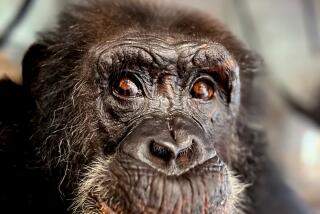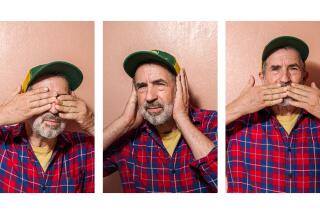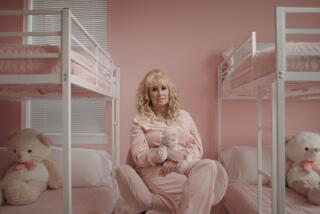Pioneer Chimps : They Still Boldly Go Where No Man Has Gone Before
Few people marked the passing, last week, of the 25th anniversary of one of the most singular events in our countryâs history. On Nov. 29, 1961, the first American orbited the Earth.
His name was Enos, and he left the planetâs atmosphere for more than three hours.
Though we herald the contributions of our astronauts, little is remembered about the earliest heroes of our first fumbling forays into space. In those days, monkeys and chimpanzees tested American space technology before humans did. We sent them out on point duty. It wasnât that there werenât human astronauts willing to go, but before NASA administrators would risk human lives, they risked non-human lives. âBy using the animals first, they learned they had the technology to sustain life up there,â says William Hobson, director of New Mexico State Universityâs Primate Research Institute. âNobody really knew if any of that technology would work.â The institute is located at Holloman Air Force Base in Alamogordo, N.M. Now a university-operated medical center for vaccine research, it was originally the Holloman Aero Medical Laboratory, where 120 chimpanzees were trained to be what the Air Force called âchimponauts.â
In late 1953, two monkeys, Pat and Mike, made a short rocket flight. On May 28, 1959, Able, a male rhesus monkey, and Baker, a one-pound female squirrel monkey, rode a Jupiter intermediate-range ballistic missile for 15 minutes at 10,000 m.p.h.; they reached an altitude of 300 miles and were recovered, alive and healthy, 1,500 miles downrange. Though Able died during surgery to remove the implants that record vital signs, Baker went on to become a tourist attraction at the Alabama Space and Rocket Center, where she lived for 13 years.
But at the top of the monkey bars of space research were the chimpanzees. Ham (whose name was an acronym for Holloman Aero Medical) made the first American suborbital flight, going up Jan. 31, 1961, just before Alan Shepard did the same. And Enos (from enosh , which means âmanâ in Hebrew) circled the Earth twice (Ham was his backup pilot) just before John Glenn did.
Chimps were used as pilots in these more ambitious flights because, Hobson says, âtheyâre similar to humans in body size and configuration, though they are a lot stronger--on the order of four to 10 times as strong, pound-for-pound. The very early centrifuge experiments on chimps (which simulated the forces that humans would be subjected to in spaceflight) were most useful in designing the space capsules. And chimps generally are smarter than monkeys and can perform more-complex tasks.â
What about temperament?
âFrom what Iâve heard,â he says, âEnos was real disagreeable, while Ham was just the opposite.â
Ed Dittmer disagrees with this assessment. Dittmer was the senior master sergeant in charge of the Aero Medical facility at Holloman during the chimponaut program, and he handled both Ham and Enos on a day-to-day basis. âI didnât think Enos was that bad,â he says. âHe did bite me once. We were doing some work on the centrifuge--they programmed the reentry on the centrifuge--and he was strapped in. I was giving him banana pellets, and my hand got down too far, and he chomped down on my finger. But he wasnât a bad chimp. He was just a feisty little guy. He looked kind of mean--his expression.
âHam had a kind of smile on him all the time, and he liked to be held,â Dittmer says. âThey were just different chimps. Enos was easy to handle, but you couldnât hold him. He just didnât like to be held; that was just his personality. You didnât see anybody carrying him. He was usually on a little leash.â
Ham was born in West Africa. After his flight, he spent many years at the National Zoo in Washington. Then in 1980 he was taken to the North Carolina Zoological Park in Asheboro, N.C., where he lived with other chimps in a natural-habitat setting. He died in 1983 of heart and liver disease at the age of 25 (chimps can live to be 50). His remains are interred at Holloman.
Enos, who hailed from the French Cameroons, had been procured from a Miami rare-bird farm in April, 1960. The records show that the chimp had a heart murmur. Almost a year after his flight, he died at the age of 6 at Holloman. According to the official necropsy report, he died of shigella dysentery complicated by pneumonia.
âThey kept him alive with IV fluids for a month or two, trying to save him,â Hobson says. âBut it just turned out there was no real way. The spaceflight was not a cause of the illness. There were no lasting effects from that.â
Fifty of the primates now at the Primate Research Institute are veterans of the chimponaut project, which was ended in 1970. One of the original trainees, Paleface, has sired 30 offspring; he is in his mid-30s and weighs 220 pounds. The institute now houses 450 chimpanzees and 1,500 rhesus monkeys, all of which are used in vaccine-development research.
This month, under a research contract from the National Cancer Institute, the Primate Research Institute plans to inoculate selected chimpanzees with the AIDS virus in its efforts to come up with a AIDS vaccine. âThe chimps are extremely valuable animals,â Hobson says. âThey harbor the AIDS virus but donât seem to get sick from it.â Many scientists believe that AIDS may have originated in primates, and that they do not die from it because of a tolerance they have developed. Four years ago, the disease was introduced in two other primate research colonies. As more time goes by, Hobson says, âthe probability increases that they wonât come down with the disease. They offer great hope for a vaccine because they carry the virus and develop antibodies.â
âBefore we began our experiment,â Hobson says, âwe screened the entire colony. Interestingly, we found one animal, originally from Africa, that already had AIDS antibodies. We then checked a preserved blood sample from 1974, and it had antibodies to the virus then.â
To ensure that the staff is not exposed, the chimps will be kept in special containment facilities. âThe major danger,â Hobson says, âwould be to be bitten. Even then, (the chances of) contracting the disease would be remote. But we think the risk we take is worthwhile. Weâre hoping this research will bear fruit.â
At Holloman, chimpanzees are once again on point, standing in, taking risks in place of humans.
More to Read
Sign up for Essential California
The most important California stories and recommendations in your inbox every morning.
You may occasionally receive promotional content from the Los Angeles Times.










